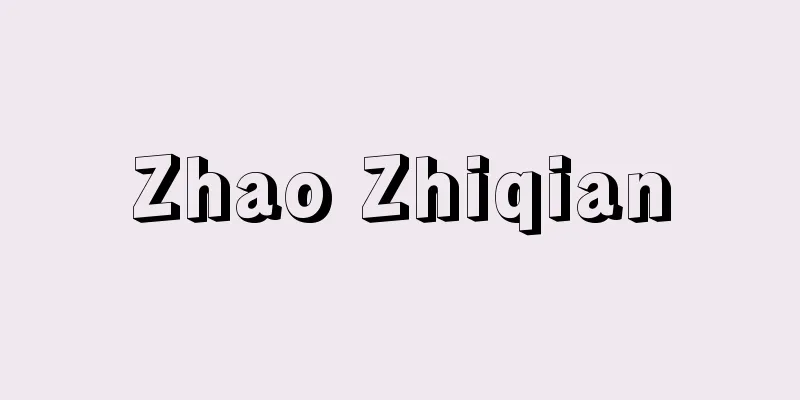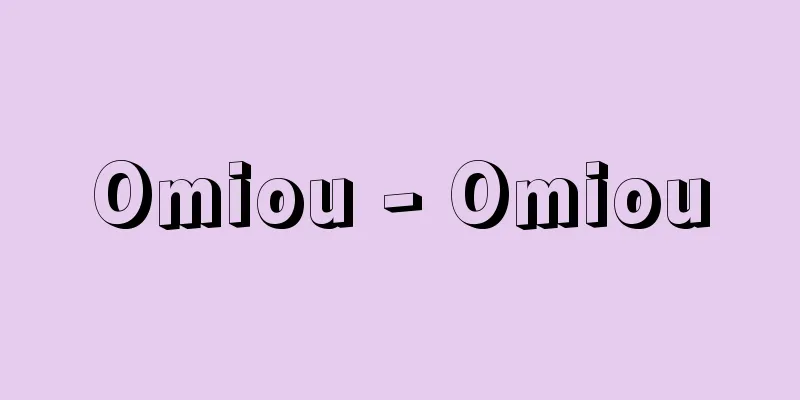Zhao Zhiqian

|
A Chinese calligrapher, painter, and seal engraver in the late Qing Dynasty. His pen name was Yifu, later changed to Qishuku, and he also had the names Meian, Lengjun, Bian, Kanliao, and Wumon. He was from Shaoxing, Zhejiang Province. At the age of 31, he passed the local examination, but failed every time he took the public examination in Beijing five times. He made a living by teaching children how to read and write, and by selling his calligraphy, paintings, and seal engravings. In his later years, he served as a county magistrate in Jiangxi Province, but died of overwork. He first studied calligraphy under Gan Zhenqing, but eventually adopted Bao Shichen's "reverse entry into the flat area" brushwork and studied the Beibei style, and by shaping the pent-up passion with modern intellect and sensibility, he improved each part of the style, creating a unique style that has been described as "Northern Wei calligraphy." In painting, he admired the style of Yun Shouping and Xu Wei, and specialized in graceful mokkotsu flower paintings, becoming a representative artist of early modern flower painting. His seal carvings are based on Han seals and Deng Shiru, and are intellectual, delicate, and show a quiet, high-ranking style. Since the Taisho era, he has had a great influence on the world of calligraphy in Japan, and many of his works have been passed down. His collected works include "Ink of Beiyanxi," "Ink of the Nikinchodo," "Nikinchodo Seal Collection," and "Zhao Zhaoshu Seal Collection," and his written works include "Rokucho Betsujiki," "Record of a Visit to Monuments at Buhuanyu," and "Baianshu." [Shigenori Tsutsui] "Nishikawa Yasushi, ed., "Inkworks of the Nikinchodo" (1979, Nigensha)" ▽ "Kenshin Calligraphy Association, ed., "Collection of Zhao Zhiqian's Calligraphy and Paintings" (1986, Toho Shoten)" ▽ "Kobayashi Tokan, ed., "Chinese Seal Carving Series 26 & 27, Zhao Zhiqian 1 & 2" (1981, Nigensha)" ▽ "Nakada Yujiro, ed., "Calligraphy Art 10, Zhao Zhiqian and Others" (1972, Chuokoron-Shinsha)" Qing Dynasty (1867) Works: 181.9 x 48.1 cm each; owned by the Metropolitan Museum of Art Zhao Zhiqian's Five Words in Seal Book Source: Shogakukan Encyclopedia Nipponica About Encyclopedia Nipponica Information | Legend |
|
中国、清(しん)末の書家、画家、篆刻(てんこく)家。字(あざな)は益甫(えきほ)、のち撝叔(きしゅく)と改め、梅庵(ばいあん)、冷君、悲盦(ひあん)、憨寮(かんりょう)、无悶(むもん)などと号した。浙江(せっこう)省紹興の人。31歳のときに郷試に及第したが、北京(ペキン)で行われる会試には5回応じてことごとく失敗し、子供に読み書きを教えたり、書画や篆刻を売って生計をたてた。晩年は江西省の知県を歴任したが、過労のために没した。書は初め顔真卿(がんしんけい)を習ったが、やがて包世臣(ほうせいしん)の「逆入平出(ぎゃくにゅうへいしゅつ)」の用筆法を取り入れて北碑を学び、鬱勃(うつぼつ)たる熱情を近代的な知性と感覚で造型して各体をよくし、「北魏(ほくぎ)書」と評される独得の書風を創始した。画は惲寿平(うんじゅへい)や徐渭(じょい)の風を慕って優麗な没骨(もっこつ)の花卉(かき)を得意とし、近代初頭の花卉画の代表的作家となった。篆刻は漢印や鄧石如(とうせきじょ)を基礎として、理知的かつ繊細で、静かな高い風格を示す。大正時代以来、日本の書道界に与えた影響は大きく、作品も多く伝来している。作品集に『悲盦賸墨(あんようぼく)』『二金蝶堂(にきんちょうどう)遺墨』『二金蝶堂印譜』『趙撝(ちょうき)叔印譜』などがあり、著書に『六朝別字記』『補寰宇(かんう)訪碑録』『梅庵集』などがある。 [筒井茂徳] 『西川寧編『二金蝶堂遺墨』(1979・二玄社)』▽『謙慎書道会編『趙之謙書画集』(1986・東方書店)』▽『小林斗盦編『中国篆刻叢刊26・27 趙之謙 1、2』(1981・二玄社)』▽『中田勇次郎編『書道芸術10 趙之謙他』(1972・中央公論社)』 清代(1867年) 作品部各181.9×48.1cmメトロポリタン美術館所蔵"> 趙之謙『篆書五言対聯』 出典 小学館 日本大百科全書(ニッポニカ)日本大百科全書(ニッポニカ)について 情報 | 凡例 |
>>: Superego - English spelling: superego
Recommend
Johana [town] - Johana
An old town in Higashitonami County in the southwe...
Yoshiya Nobuko
Novelist. Born on January 12, 1896 in Niigata Pre...
BAM - Bam
A railway line that runs through Eastern Siberia a...
Kyoto School
A general term for a group of philosophers from th...
Tokuyo Nikaido - Tokuyo Nikaido
1880-1941 An educator from the Meiji to early Sho...
One Hundred Million Idiots - Ichiokuso Hakuchika
...After the war, he resumed writing under the pe...
Bambusa multiplex (Lour.) Raeusch.
A medium-sized bamboo in the Poaceae family. The c...
Iga Kokubunji Temple
...Former name of province. Ishu. Currently, it i...
Shuichi Kato
Critic and novelist. Born in Tokyo. Graduated fro...
excoriation
…There are the following distinctions: (1) excori...
Morris dance
A British folk dance. The origin of the word Morri...
Yoshida
A castle town in Mikawa Province and a post statio...
Rhacomitrium canescens (English spelling) Rhacomitrium canescens
… [Kitagawa Takashi]. … *Some of the terminology ...
Quena - Quena
...However, what they all have in common is that ...
fluorescent bleaching agent
…It is also called a fluorescent bleaching agent ...









